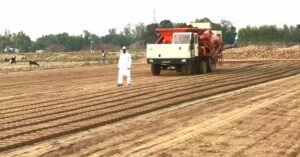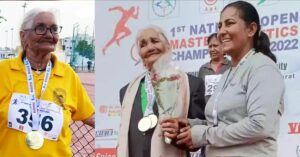Prof Innovates Cow Dung Plaster & Bricks With Neem To Keep Homes 7 Degrees Cooler
Haryana-based Dr Shivdarshan Malik has developed the Vedic Plaster and Gocrete Bricks, two innovations to replace conventional concrete while building structures, in a bid to revive traditional modes of construction
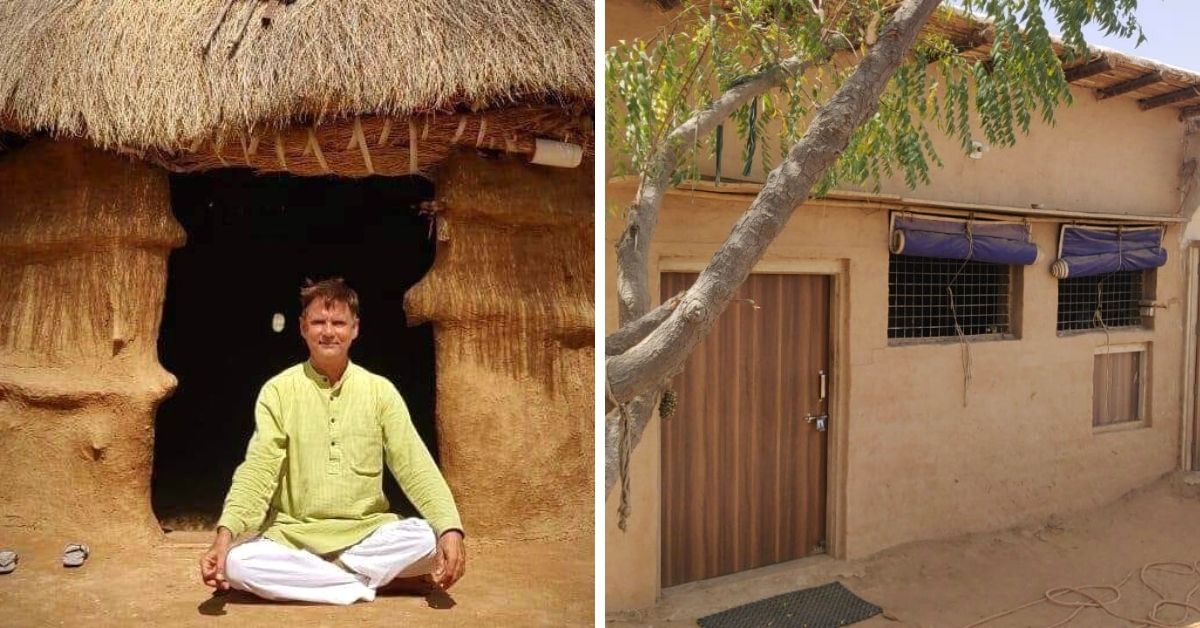
“During my childhood, the 80 km stretch between Madina village and Punjabi Bagh, Delhi, was covered with lush green farms. But in the past 35 years, the farms have disappeared and been replaced with buildings that resemble a concrete jungle,” recalls Dr Shivdarshan Malik, a resident of Haryana.
He adds, “Concrete is one of the major contributors to climate change and generates a significant carbon footprint.”
The 53-year-old says the use of the material also has devastating effects beyond its lifecycle. “Concrete buildings have a life of 50 years and later, end up as non-recyclable construction debris,” he tells The Better India.
To find a solution, Dr Shivdarshan has developed the Vedic Plaster and Gocrete Bricks — made from cow dung, soil and other natural materials — that can replace concrete.
An eco-friendly alternative
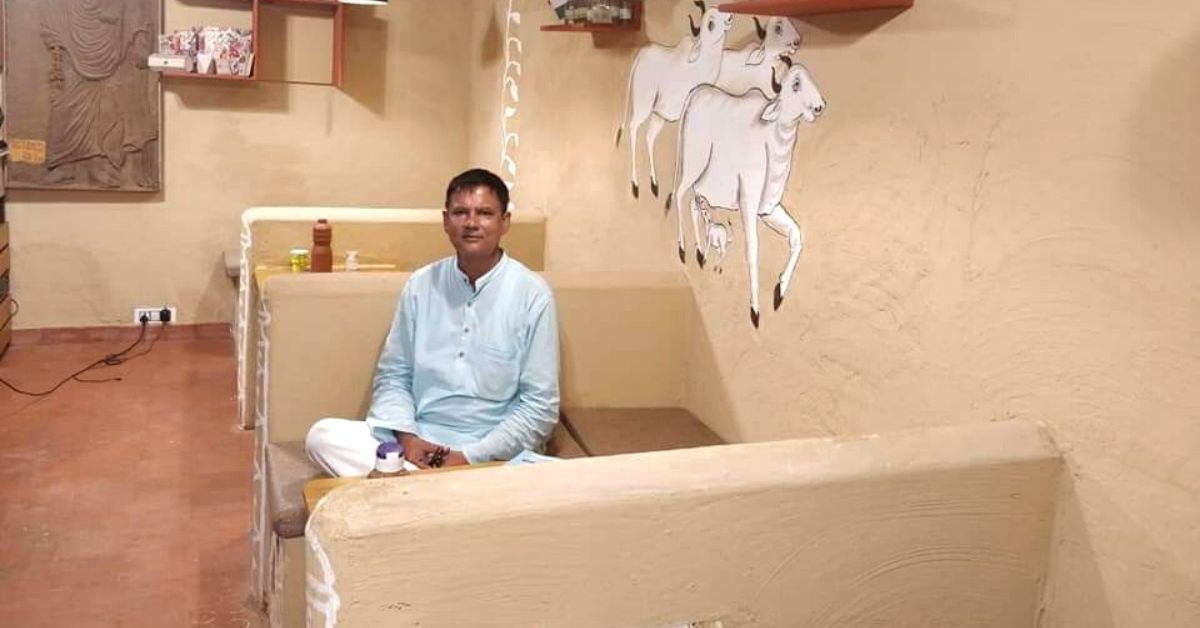
A lecturer by profession, Dr Shivdarshan is observant about the carbon footprint his lifestyle generates. “I know how much carbon emissions I have caused by using my car and the multi-storied concrete house that I built. I have found ways to mitigate and nullify the impact. But I also wanted to bring an impact on a large scale, which inspired me to conceive the products,” he says.
In 1995, Dr Shivdarshan completed his PhD from Rohtak University, Haryana. Soon, he joined as a professor at Murthal University, Sonipat. However, he was not satisfied with the job.
“I believed I was limiting my skills and knowledge by sticking to the syllabus. I wanted to contribute more towards society and work for a bigger cause,” he says.
In 1997, Dr Shivdarshan quit his job in 1997 and started as a consultant with IIT-Delhi, World Bank and United Nations Development Programme (UNDP), working on multiple projects related to environment and sustainability.
“During a project in 2005, I worked on using agricultural waste and dry cow dung to generate clean energy. The village had stacks of cow dung that was saturated and going to waste. It was emitting methane and contributing to greenhouse gases. Turns out, the villagers had given up the traditional practice of plastering their houses with cow dung. They believed it was better to live in concrete houses. But cow dung keeps homes cooler during summer months, and works as insulation during winter days,” he says.
“In 2006, after some research, I prepared the Vedic Plaster, which can replace the conventional layer used in concrete structures for smooth walls. The plaster, made from cow dung, soil, clay, neem leaves, gypsum, cluster beans, limestone and other eco-friendly materials, is breathable and works similar to traditional plastering found in rural India,” he claims.
He adds that the Vedic Plaster does not absorb external heat, which helps keep rooms in apartment buildings cooler as compared to conventional structures.
Dr Shivdarshan says the unique plaster can be used on existing modern concrete houses too. “The existing plaster has to be scraped off and replaced with the Vedic mix. About 20,000 homes across India use the plaster,” he adds.
Odisha-based entrepreneur Pradeep Agrawal who recently used the product on his roof, says, “The summer season is progressing, and my family has started using air conditioning during peak afternoon hours to seek relief. It has been a few days since I layered the house roof with the environmentally-friendly plaster, and we no longer need air conditioning.”
Pradeep says the effects were unexpected and would save at least Rs 8,000 a month on electricity bills.
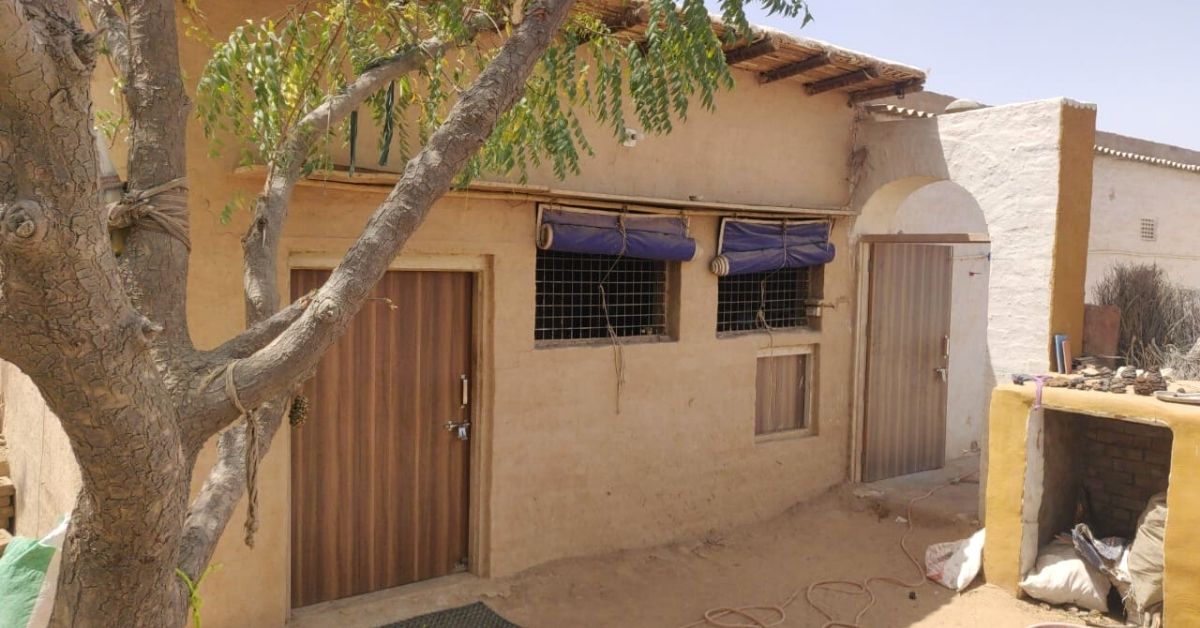
Another user from Kolhapur in Maharashtra, Kiran Mali, says he has been using Vedic Plaster at his property since 2018. “I have observed that the ambient temperature has reduced by 7 degrees Celsius, as compared to outside. The plaster also helps keep the house warm during winter months by acting as insulation,” he says.
Dr Shivdarshan owns a workshop in Bikaner, which prepares 5 tonnes of Vedic Plaster each year. He has tied up with 15 dealers across India, and the business earns an annual income of Rs 10 lakh, he notes.
In 2018, he visited the USA to deliver a lecture on cow dung management and came across houses made from wooden boards and hempcrete. “I found that, unlike India, the houses in the USA were made from board sheets and did not use massive amounts of concrete. Also, there was an increasing trend of using hempcrete, a product prepared by blending natural materials with hemp and having environment-friendly qualities,” he says.
Dr Shivdarshan says the incident pushed him to derive an environment-friendly product from cow dung. “Within a few months of my return, I conceived Gocrete, made from cow dung and other eco-friendly locally sourced materials,” he adds.
“Concrete walls absorb and radiate about 30 per cent of heat, while the roof amounts to 40 per cent. Using the Gocrete Handmade Bricks can prevent up to 70 per cent heat from entering the houses,” he says.
Dr Shivdarshan says that a person with a cowshed, or access to cow dung, essentially free supply of the material, which is seven times cheaper than the alternative.
A blend of modern and traditional civil engineering
The raw material required to prepare the Gocrete varies as per the geographic location of where the structure is to be built. “India has a wide spectrum of weather variations. The weather conditions in southern parts are different from those in the cold regions of the Himalayas, and we also see temperature extremes in Rajasthan. Though the primary material remains cow dung and soil, the other ingredients used in preparing the eco-friendly bricks vary,” he says.
Dr Shivdarshan advises people to prepare the bricks near the location. “It is unfeasible for me to set up a factory for manufacturing the bricks and supplying them to different parts of India as it will add to the carbon footprints. Hence, I conduct workshops where those interested can register and learn about brick making specific to the requirements of their region,” he says.

The six-month-long course is chargeable and Dr Shivdarshan teaches people how to prepare Gocrete bricks. By the end of the workshop, each individual builds a 10×10 feet structure for demonstration. “About 150 people across Nepal, Belgium and various parts of India have received this training and built structures in Maharashtra, Rajasthan and Jharkhand,” he says.
However, COVID-19 has restricted the progress of Gocrete, as not many can attend the workshops.
Dr Shivdarshan claims that Gocrete can also be used to build multi-storeyed buildings. “The structure will require modern methods of using concrete and steel for erecting foundation, pillars and beams to support the massive load of the buildings. Conventional red bricks can be replaced with Gocrete, and a layer of Vedic Plaster can save up to 80 per cent use of concrete in the building. It is comparatively a better bargain than a regular concrete structure,” he says. “The principles of civil engineering remain the same, only the choice of material changes.”
The entrepreneur wants more people to adopt his innovative solution to fight climate change. “People calculate the cost value while constructing their houses, but they should care equally about the damage they are causing to the environment,” he says.
For inquiries and order, please contact Dr Shivdarshan on 9812054982.
Edited by Divya Sethu
This story made me
-
97
-
121
-
89
-
167
Tell Us More
If you found our story insightful, informative, or even just enjoyable, we invite you to consider making a voluntary payment to support the work we do at The Better India. Your contribution helps us continue producing quality content that educates, inspires, and drives positive change.
Choose one of the payment options below for your contribution-
By paying for the stories you value, you directly contribute to sustaining our efforts focused on making a difference in the world. Together, let's ensure that impactful stories continue to be told and shared, enriching lives and communities alike.
Thank you for your support. Here are some frequently asked questions you might find helpful to know why you are contributing?







